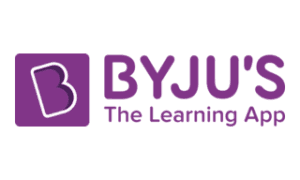The classroom isn’t what it used to be. Chalkboards are fading. Worksheets are going digital. Students are now tapping screens instead of flipping pages. At the center of this transformation? Top app developers.
These digital innovators are quietly reshaping education, one app at a time. From elementary classrooms to advanced university labs, learning is being reinvented through sleek, smart, and surprisingly fun mobile and web applications.
The Rise of Educational App Development
Why Top App Developers Are Entering the Education Sector
Education is no longer just about textbooks and lectures. Students expect more — and teachers need better tools. Top app developers have stepped in to fill the gap, creating platforms that are not only user-friendly but also research-backed and aligned with educational standards.
These developers are collaborating with educators, child psychologists, and instructional designers to build apps that actually improve learning outcomes.
It’s not just about making flashy games — it’s about building tech that teaches.
From Silicon Valley to School Hallways
Once focused on gaming and e-commerce, many of the industry’s top app developers are pivoting toward educational technology. Companies that built billion-dollar apps are now using that same talent to create educational platforms used by schools across the globe.
Key Features That Define Educational Apps by Top App Developers
Interactive Learning: Touch, Learn, Repeat
Kids learn best when they do things — not just hear them. Educational apps built by top app developers include touch-based activities, real-time feedback, and engaging visuals to make abstract concepts feel tangible.
Think spelling games that animate letters. Math puzzles that reward creative thinking. Or science apps that simulate lab experiments on a tablet.
The goal is simple: keep kids engaged while they learn.
Gamification: Turning Class Into a Game
Gamification isn’t just a buzzword. It’s a science-backed strategy to boost motivation, especially in younger learners.
Top app developers incorporate reward systems, leaderboards, avatars, and challenges to make learning feel like play. This transforms a 10-minute grammar exercise into something students actually look forward to.
And yes — even teachers admit it makes their jobs easier.
Customization and Personal Learning Paths
Not every child learns the same way. The best educational apps know this.
Developers now build adaptive features that tailor the app’s content based on a student’s performance. Some apps increase difficulty as a child improves. Others offer hints or change teaching styles to match a student’s preferences.
Integration into the Classroom Environment
Quietly Becoming Part of Daily Learning
Unlike flashy tech rollouts of the past, today’s educational apps are slipping into classrooms with very little disruption.
Teachers use apps for everything — from taking attendance and grading quizzes to assigning homework or reinforcing tough topics with practice games. Students, in turn, use them as a natural part of their day.
They’re not “extra tech.” They’re just school now.
Supporting Teachers, Not Replacing Them
One myth is that apps are meant to replace teachers. That couldn’t be further from the truth.
Top app developers understand the classroom ecosystem. Their tools are designed to support instruction, not substitute it. Apps help teachers manage large classrooms, provide targeted interventions, and gather real-time data on student progress.
Global Reach, Local Impact
Bridging Gaps in Under-Resourced Areas
In many parts of the world, quality education is still hard to access. Educational apps built by top app developers are changing that.
With just a smartphone or tablet, students in remote or underfunded regions can access the same quality content available in elite urban schools. Offline functionality, multilingual support, and low-data modes help make these apps usable anywhere.
Cultural Sensitivity and Localization
The best developers understand that education is never one-size-fits-all. Apps are now being tailored to local languages, teaching styles, and cultural values.
Whether it’s a math app for students in Kenya or a literacy program in India, top developers are making sure the tools feel relevant and respectful to each region they serve.
The Role of AI and Machine Learning
Smart Learning That Evolves With the User
Artificial intelligence is no longer futuristic — it’s embedded in many educational apps already. AI helps apps track performance, suggest next steps, and even predict when a student is likely to struggle.
Top app developers are using machine learning to create “smart tutors” within their platforms. These features can answer questions, give instant feedback, and provide encouragement, just like a human teacher would.
Conclusion
The future of education is being written in code — by top app developers. They’re not just changing how we learn. They’re changing how we think about learning itself. By blending interactivity, personalization, and smart design, these apps are transforming classrooms, lifting students, and giving teachers new ways to inspire. It’s not just tech for tech’s sake. It’s tech with a purpose. And as these developers continue to innovate, one thing’s for sure: the classroom will never be the same again.
FAQs
What makes an app developer a “top” developer in the education space?
Top app developers in education combine technical expertise with a deep understanding of learning science. They collaborate with educators and consistently produce high-impact, user-friendly tools.
How do educational apps help students with learning differences?
Many apps offer customizable features like text-to-speech, pacing options, and visual support. These tools make learning more accessible for students with ADHD, dyslexia, or sensory sensitivities.
Can educational apps replace traditional teaching methods?
No, they complement them. Apps are meant to enhance classroom instruction, not replace it. Teachers remain central to student success while using these tools for better engagement and support.
Are these apps only for younger students?
Not at all. While many focus on early education, a growing number of apps target high school, college, and adult learners. Lifelong learning is a key focus for developers moving forward.





























